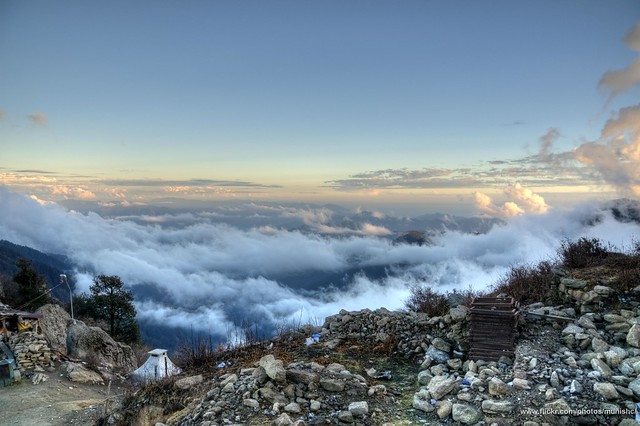
At least 20 people, mostly children, drowned and scores are missing after an Australia-bound boat carrying Middle Eastern asylum-seekers sank off Indonesia, police said on Friday.
Twenty-five people were plucked to safety but about 75 were unaccounted for after the boat carrying people from Lebanon, Jordan and Yemen went down off the main Indonesian island of Java, police said.
It came just days before new Australian Prime Minister Tony Abbott visits Indonesia for talks likely to focus on his tough policies aimed at stemming the flow of asylum-seekers.
Warsono, a police official in Cianjur district on Java, said the bodies were discovered floating in an estuary on Friday morning.
"Local people found 20 dead bodies floating in the water, most of them are children," he said. "The number of deaths may increase."
"Local people said their boat had broken into several pieces," said the official, who like many Indonesians goes by one name, although he did not know when the accident happened.
A spokesman for the Indonesian search and rescue agency said that four of its boats, along with fishing boats, had earlier been searching for the missing.
The search had been called off when it got dark and would resume again on Saturday, he said.
Warsono said that the boat was believed to have been carrying 120 people when it went down and had been heading for the Australian territory of Christmas Island.
They had departed from the fishing town of Pelabuhan Ratu, in the district of Sukabumi, on the south coast of western Java, he said.
Hundreds of asylum-seekers from around the world have died in recent years trying to make the treacherous sea crossing from Indonesia to Australia on rickety, wooden boats.
They normally pay people-smugglers huge sums to make the crossings, and almost always head for Christmas Island, which is far closer to Indonesia than it is to the Australian mainland.
17 Lebanese dead
Lebanese officials in Jakarta said the boat carrying at least 80 people sunk earlier Friday, 12 hours by sea off the Indonesian coast on its way to Australia. The boat was said to be carrying migrants from different nationalities.
At least seventeen Lebanese including a number of children drowned on their way to Australia in a boat accident off the coast of Indonesia, a local official said Friday.
“I only have confirmation that 17 people have died on the boat,” Ali Hussein, mukhtar of the northern village of Qabeet, where the victims are from, told The Daily Star.
"We don't have any information as to how many Lebanese are on the ferry," the Lebanese embassy official said.
An Indonesian official said 20 bodies were found floating in the water, most of them children, and that 25 adults had so far been rescued from the boat alive, according to AFP.
The National News Agency published the names of some of the men, women and children who died on the ferry.
Among the victims were nine members from the family of a local man who the mukhtar identified as Hussein Ahmad Khodr.
President Michel Sleiman, who had just returned from New York after attending the United Nations General Assembly meeting, instructed officials to follow up on the incident and asked them to take the necessary measures, a statement from his office said.
Caretaker Prime Minister Najib Mikati urged officials at the Lebanese Embassy in Jakarta to coordinate with Indonesian authorities and uncover the circumstances surrounding it as well as determining the fate of the Lebanese travelers.
Residents of Qabeet are mourning the death of their relatives and most of them will not be able to provide their loved ones with proper burial, the local mukhtar said.
Hussein added that many from the Akkar village sell all of their belongings and property to make the trip to Indonesia and travel by sea to Australia “seeking a better life.”
“The situation is very difficult to deal with because bringing the bodies to the village will be very costly,” he added.
Hussein also said that he tried to convince many of the residents to look for an alternative given that traveling on a boat to Australia was very risky.
“They come to me to prepare their passport documents so they could travel to Indonesia ... I try to advise them but they want a better life for their families,” he said.
The village’s Imam Sheikh Ali Khodr, the cousin of the man whose family died in the incident, said his relative contacted him earlier Friday and told him about the accident.
“He told me that his eight children and wife drowned but authorities only retrieved the bodies of the mother and two of his daughters,” Khodr told The Daily Star.
“When he left with his family, we all started crying because we did not know when we would see them again,” he said.
The sheikh added that his cousin was among many residents of the village and surrounding areas who were “fooled” by what he described as mafias who prepare the visas to Indonesia and the boat trips to the Australian coast.
Friday 27 September 2013
http://www.channelnewsasia.com/news/asiapacific/20-dead-many-missing-as/828764.html
http://www.dailystar.com.lb/News/Lebanon-News/2013/Sep-27/232785-group-of-lebanese-drown-in-sea-near-indonesia-nna.ashx







